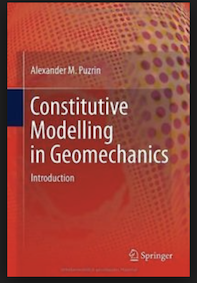Landslide Influence Zone: a Hidden Hazard

Continuing urbanisation brings construction into landslide prone areas. Since 1940s it has been understood that earth pressures acting on the structures within the sliding body may significantly differ from those in the stable slopes. Design codes reflect this knowledge and recommend application of landslide pressures for construction in permanent landslides. It is less clear, however, what kind of design pressures should be used outside of the sliding body in the landslide proximity. This question is relevant for both permanent landslides and one-time events. Of particular practical interest is the area just below the lower boundary of the landslide compression zone. Intuitively, there should be a transition zone, within which high landslide pressures subside to the regular (at rest) earth pressures in the stable slope. This presentation attempts to determine dimensions of this “landslide influence zone” and the lateral earth pressures within it, providing some insights for design considerations.
Alexander M. Puzrin
Professor and Chair of Geotechnical Engineering
ETH Zurich, Switzerland
Where: Sala Geotecnica, Biblioteca Disg, III Piano
When: 15:30 Friday, 18 May 2018
Bio - Alexander M. Puzrin is Professor of Geotechnical Engineering and Director of the Institute for Geotechnical Engineering of ETH Zurich, Switzerland. He is engaged in the constitutive modeling of geomaterials and the analysis of progressive and catastrophic failure in soils, with applications to creeping terrestrial and tsunamigenic submarine landslides. His other interests are the application of novel sensor technologies to geotechnical monitoring and in development of innovative chemical and biological soil improvement techniques. His papers were awarded by the UK Institution of Civil Engineers (ICE). Professor Puzrin has been involved as an expert and consultant in large-scale onshore and offshore geotechnical projects in the UK, the US, Mexico, Azerbaijan, Russia, Israel and Switzerland. He is a co-founder of the ETH Zurich spin-off company Marmota Engineering AG providing high-tech fiber-optics geotechnical monitoring services to the industry. He served as the Editor and Chairman of the Géotechnique Advisory Panel from 2012–2015.Alexander M. Puzrin is Professor of Geotechnical Engineering and Director of the Institute for Geotechnical Engineering of ETH Zurich, Switzerland. He is engaged in the constitutive modeling of geomaterials and the analysis of progressive and catastrophic failure in soils, with applications to creeping terrestrial and tsunamigenic submarine landslides. His other interests are the application of novel sensor technologies to geotechnical monitoring and in development of innovative chemical and biological soil improvement techniques. His papers were awarded by the UK Institution of Civil Engineers (ICE). Professor Puzrin has been involved as an expert and consultant in large-scale onshore and offshore geotechnical projects in the UK, the US, Mexico, Azerbaijan, Russia, Israel and Switzerland. He is a co-founder of the ETH Zurich spin-off company Marmota Engineering AG providing high-tech fiber-optics geotechnical monitoring services to the industry. He served as the Editor and Chairman of the Géotechnique Advisory Panel from 2012–2015.

